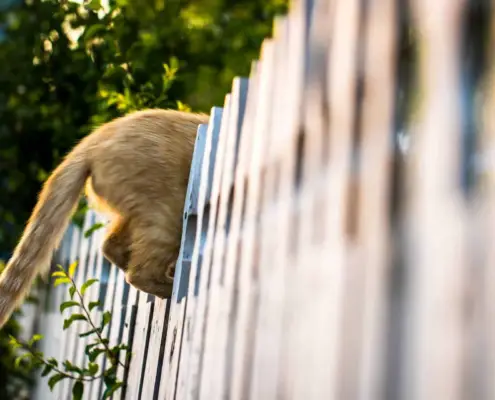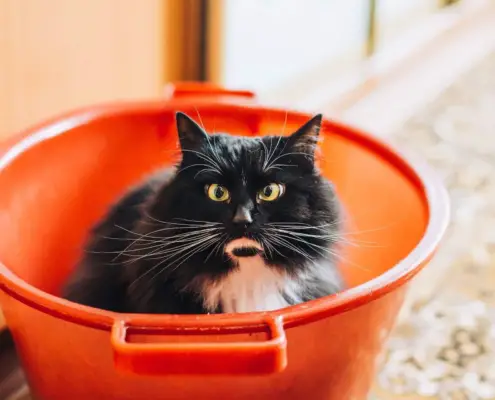
As the temperature rises during the summer months, it’s important to understand how hot is too hot for your feline friends. Cats are sensitive to heat and can easily become overheated, leading to serious health problems like heatstroke. In this article, we will explore the ideal temperature range for cats, signs of overheating, risks of heatstroke, and how to keep your cat cool during hot weather.
Cats and heat sensitivity
Cats are known for their love of warmth, but they are also heat-sensitive animals. As a result, they struggle to regulate their body temperature in extremely hot environments. Unlike humans, who can sweat to cool down, cats rely on panting to release excess heat. However, panting is not as effective as sweating and can lead to dehydration, which can complicate the issue further.
Furthermore, cats have a high metabolic rate, which means they produce more heat than other animals of their size. This can make them more vulnerable to heat-related illnesses, especially if they have underlying health conditions. As responsible cat owners, it’s essential to understand the ideal temperature range for cats and how to keep them cool during hot weather.
The ideal temperature range for cats
Cats are comfortable in temperatures ranging from 20 to 25 degrees Celsius (68 to 77 degrees Fahrenheit). Temperatures above these ranges can pose a risk to your cat’s health. A cat’s body temperature ranges from 37.5 to 39.2 degrees Celsius (99.5 to 102.5 degrees Fahrenheit). When the surrounding temperature is too high, your cat’s body temperature can rise, leading to heat exhaustion and, in severe cases, heatstroke.
It’s important to note that cats with certain health conditions, such as obesity, respiratory problems, and heart disease, are more susceptible to heat-related illnesses. In addition, older cats and kittens are also more vulnerable to heatstroke. Therefore, it’s crucial to monitor your cat’s behavior during hot weather and take appropriate measures to keep them comfortable.
Signs of overheating in cats
Cats can’t tell you when they’re feeling too hot, so it’s essential to watch for signs of overheating. Some common signs of heat exhaustion in cats include panting, lethargy, drooling, vomiting, and diarrhea. In severe cases, your cat may collapse, have seizures, or go into a coma.
If you notice any of these signs, it’s crucial to take immediate action to cool down your cat and prevent heatstroke. Move your cat to a cool, shaded area, offer them water, and use a damp towel to help lower their body temperature. If your cat doesn’t improve, seek veterinary help immediately.
Risks and dangers of heatstroke in cats
Heatstroke is a severe and potentially life-threatening condition that can occur when a cat’s body temperature rises above 40 degrees Celsius (104 degrees Fahrenheit). Heatstroke can cause damage to your cat’s internal organs, including the brain, liver, and kidneys. In severe cases, it can lead to death.
Preventing heatstroke is essential for your cat’s health and well-being. It’s crucial to keep your cat cool and hydrated during hot weather and to be aware of the signs of heat exhaustion. If you suspect your cat has heatstroke, seek veterinary help immediately.
How to keep your cat cool during hot weather
There are several steps you can take to keep your cat cool during hot weather. The first step is to ensure your cat has access to plenty of fresh, cool water. You can also offer your cat ice cubes or frozen treats to help keep them cool.
Provide your cat with a cool, shaded area to relax in. You can also use a fan or air conditioning to help lower the temperature in your home. If your cat spends time outdoors, ensure they have access to a shaded area and plenty of water.
Creating a comfortable environment for your cat
Creating a comfortable environment for your cat during hot weather is essential. Keep your home well-ventilated and avoid direct sunlight. You can also use cooling mats or pads to help keep your cat cool. These products are made from materials that absorb and dissipate heat, providing a cool and comfortable surface for your cat to rest on.
Tips for outdoor cats during hot weather
If your cat spends time outdoors, it’s essential to take extra precautions during hot weather. Ensure your cat has access to a shaded area and plenty of water. You can also provide your cat with a shallow pool or water fountain to help them cool down.
Avoid leaving your cat in a parked car, as temperatures inside a vehicle can rise quickly and become lethal for your cat. If you’re traveling with your cat, make sure to keep the air conditioning on and provide them with plenty of water.
Cooling products and techniques for cats
There are several cooling products and techniques you can use to help keep your cat cool during hot weather. Some popular products include cooling mats, vests, and bandanas. These products are made from materials that absorb and dissipate heat, providing a cool and comfortable surface for your cat to rest on.
You can also use a fan or air conditioning to help lower the temperature in your home. If your cat enjoys being groomed, you can use a damp cloth or sponge to help cool them down.
When to seek veterinary help for heat-related issues
Heat-related illnesses can be life-threatening, and it’s essential to seek veterinary help if you suspect your cat is suffering from heat exhaustion or heatstroke. Your vet can provide emergency treatment, including intravenous fluids and medications to help lower your cat’s body temperature.
Keeping your cat safe and cool in hot weather
In conclusion, cats are sensitive to heat and vulnerable to heat-related illnesses like heat exhaustion and heatstroke. As responsible cat owners, it’s crucial to understand the ideal temperature range for cats and how to keep them cool during hot weather. Providing your cat with plenty of fresh water, a cool and shaded area, and using cooling products and techniques can help keep your cat comfortable and safe during hot weather. Remember to watch for signs of overheating and seek veterinary help if you suspect your cat is suffering from a heat-related illness.
If you enjoyed my article, I would appreciate you sharing it with your network.

Sima Ndlebe
Sima writes for CatBuzz. He is interested in Cats, Health and Fitness, and Entrepreneurship.
Published: 14 November 2023




